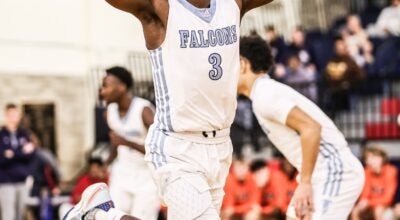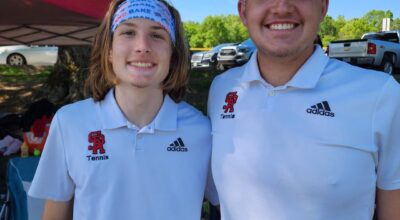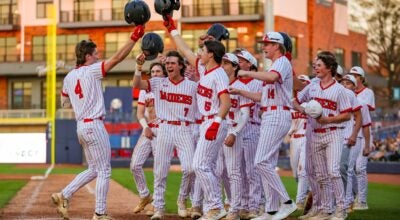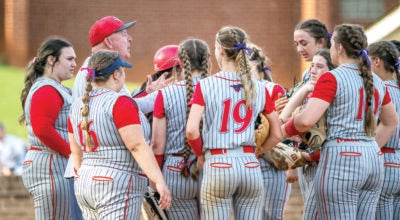The Curious Case of Johnny Temple
Published 12:00 am Friday, July 1, 2011
By Mike London
mlondon@salisburypost.com
SALISBURY — When former Catawba slugger Jerry Sands was with the Los Angeles Dodgers earlier this year, Catawba sports information director Jim Lewis naturally watched his games.
There were times when a play-by-play man, unfamiliar with Sands, was astonished to learn he was from a Division II school in North Carolina called Catawba.
Almost instantly, researchers would inform the play-by-play guy that the most famous baseball player to come out of Catawba was Johnny Temple.
“You always knew as soon as a broadcaster said Sands was from Catawba, they’d be mentioning Johnny Temple’s name a few seconds later,” Lewis said. “That Temple played baseball at Catawba is all over the Internet. It’s not like just one source has it.”
“Johnny Temple attended Catawba College (1947-1948), where he starred in baseball,” is authoritatively offered by Baseball Reference.com. Variations of that theme can be found in 30 more places on the Web.
Temple’s name rings a loud bell with fans who followed the game in the 1950s and early 1960s. A scrappy second baseman, mostly with the Cincinnati Reds, he willed himself into being a four-time all-star. His lack of power left him short of Hall of Fame credentials, but when you factored in his strong defense, his refusal to strike out and his solid baserunning skills, he was close to being an elite player.
During Temple’s heyday (1954-61), the fuss over who was baseball’s best second baseman raged around Nellie Fox of the Chicago White Sox and Temple. When Pittsburgh’s Bill Mazeroski eventually entered the argument, Temple growled at sportswriters, “Mazeroski can’t carry my glove.”
Lewis had no trouble looking up Temple’s impressive MLB stats, but there was one small problem.
“Obviously, he’d be a great candidate for the Catawba Hall of Fame,” Lewis said. “Except for one thing. There’s no record of Temple ever playing baseball at Catawba. There are no stats. He’s not in any of the yearbooks. We’ve looked.”
There’s a reason he’s missing in action. Temple’s career is fascinating, but it appears certain he never played an inning for Catawba’s baseball program.
The definitive story on Temple during his prime was penned by Furman Bisher, one of the finest sportswriters of the 20th century. Bisher wrote for the January, 1960, edition of Sport Magazine. The headline — “Roughneck at Second Base.”
Born in Denton, Bisher was writing about a fellow Davidson County native. Temple is always listed as a product of Lexington, but he confessed to Bisher he grew up on a small farm in the crossroads community of Reeds in western Davidson.
“I haven’t gone big-town in the majors,” Temple stated. “I just got tired of having to explain where Reeds is every time somebody asked me where I’m from. At least Lexington is on the map.”
Temple “had a brief run at Catawba,” Bisher wrote, and Temple informed him he lettered in football and basketball prior to leaving before Catawba’s baseball season.
Temple’s explanation: “I had a limited scholarship, but I didn’t have enough money to buy clothes and the other things, so I quit and went into the Navy.”
Temple’s run at Catawba was brief indeed.
A story in the Salisbury Post on Aug. 30, 1945, lists Temple as a back and one of 50 or so candidates eagerly reporting for preseason football workouts.
Catawba’s fleet of backs in 1945 included athletes such as Carroll Bowen, Bill Greene, Bill Speacht, Jack Ward and Charlie “The Slinging Kid” Gabriel. Temple wasn’t listed by the Post as being on the first, second or third strings, which isn’t shocking considering he was a 140-pound freshman.
When the games started, he wasn’t mentioned among the substitutes.
Temple’s fate was similar in basketball, but he was at Catawba, at least for a while. Commenting on the freshmen’s work in preseason drills, coach Dwight Holshouser told the Post on Dec. 7, 1945, “Temple looks good.”
Temple registered one point in the boxscore in a preseason scrimmage with the Thomasville Lions — Catawba played everyone from YMCAs to UNC in those days — but he vanished when the real games began, so it’s hard to believe he could have lettered.
Holshouser gave the lion’s share of the playing time to Bowen, Gabriel, Tuck Gudger, Tinker McGinnis and Bobbin’ Bob Van Hoy.
At some point, maybe at Christmas break, Temple opted for the life of a sailor.
There’s one more discrepancy in Temple’s tale — his age. During his playing career, Temple’s Topps baseball cards always listed his date of birth as Aug. 8, 1929, and Bisher believed that to be true. But all the reference materials available now agree he was born two years earlier —Aug. 8, 1927.
It’s not hard to figure that one out. Temple was ignored by scouts for years and snubbed by local pro teams he tried out for due to his size. When he finally got signed by the Reds at a 1948 tryout, it makes sense that he fudged on his age. He was 20, almost 21, when he got that contract, but the Reds believed him to still be 18. That made him a much more exciting prospect.
Temple told different writers different tales about that tryout. It’s hard to say what happened to his fling with the Navy, but he told Bisher he and his brother Chub, a pitcher, and outfielder George Snyder were painting houses when they decided to attend a tryout in Mooresville. Temple explained they were the only three that showed up, so all three were signed.
Starting with 1948, there’s no need to speculate. Temple left behind a clear track record of line drives, fines and fisticuffs.
Temple told Bisher when he signed with the Reds, he thought that meant he was headed to Cincinnati. Instead, he started out as a shortstop at Morganton in the Class D Western Carolina League. He hit .316.
In 1949 at Ogden, Utah, he pounded out 200 hits in 116 games, batting an even .400.
He stayed hot at Columbia, S.C., in 1950 and got married at home plate to Becky Sheely late in the season.
He spent 1951 and part of 1952 with Tulsa, the Reds’ Double A team. That’s where they converted him from shortstop to second base.
In his first major league exhibition, Temple was ejected by the plate umpire for arguing a called third strike.
“From (Stan) Musial I’d take that,” umpire Larry Goetz informed him. “But not from a runt.”
His first official MLB homer — Temple would hit only 22 in 13 seasons — was a grand slam at New York’s Polo Grounds.
By 1954, he was a full-time starter for the Reds. He turned double plays with partner Roy McMillan and fought with everybody — opponents, teammates, umpires and managers. He punched out Cincinnati’s official scorer after being charged with an error on a tough play.
Bisher said Temple weighed 155 pounds — “tobacco cud and all” — but he bowled over Milwaukee’s 200-pound catcher Del Crandall on a play at the plate. Informed by concerned teammates that Crandall hadn’t gotten up, Temple barked, “He’s not supposed to. That’s the way you play this game.”
Temple’s most revered rhubarb was with Milwaukee shortstop Johnny Logan.
Temple hit a groundball with burly teammate Jim Greengrass at first base. Greengrass upended Logan with a hard slide, and they got up throwing punches.
Temple was flailing at Logan as soon as he could sprint to second base, and it took police long minutes to break things up. Finally, with the smoke cleared, Logan was ejected.
“I’ll get you,” Logan promised Temple.
“No time like the present,” Temple replied, and they fought another round, pounding away at each other as they rolled into the outfield.
Temple wasn’t just about altercations. As a Red, he twice batted .300. He was second in the league in steals in 1954 and led in walks in 1957. In 1959, he scored 102 runs. He was an NL All-Star in 1956, 1957 and 1959.
Temple’s long association with the Reds ended with a two-minute, late-night phone call prior to the 1960 season.
Cleveland craved Temple’s fire so badly it traded second baseman Billy Martin, ace hurler Cal McLish and prize prospect Gordy Coleman to the Reds.
Temple was an American League All-Star in 1961 before he faded. He finished up with stints with the Baltimore Orioles and Houston Colt 45s, plus a six-game curtain call with Cincy in 1964.
He died in 1994 at age 66 in White Rock, S.C.
It’s clear Temple wasn’t a Catawba Indian more than a couple of months, but he’s still a part of the school’s rich athletic history.





